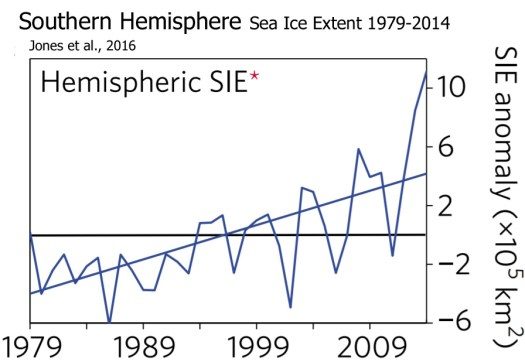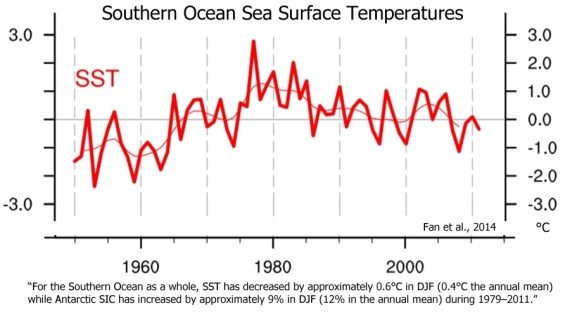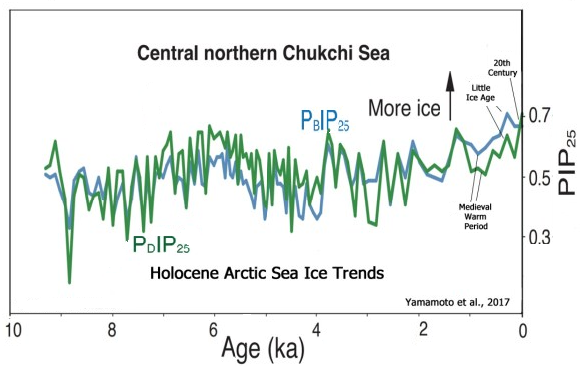
Contrary to claims that modern day sea ice changes are "unprecedented", alarming, and well outside the range of natural variability, biomarker proxies used to reconstruct both Arctic and Antarctic sea ice conditions since the Early Holocene increasingly reveal that there is more extensive Arctic and Antarctic sea ice during recent decades than for nearly all of the last 10,000 years.
Antarctic Sea Ice Extent
According to Comiso Et Al., 2017, "Antarctic Sea Ice Extent Has Been Slowly Increasing Contrary To Expected Trends Due To Global Warming And Results From Coupled Climate Models."
'After A Record High Extent In 2012 The Extent Was Even Higher In 2014. ... [T]He Trend In Sea Ice Cover Is Strongly Influenced By The Trend In Surface Temperature [Cooling]."
When you look at the graph above, you will see that the increase in Antarctic sea ice extent since 1979, no surprise, has coincided with a decline in southern ocean temperatures (graph below).
And when you look at the following graph, you will see that Arctic sea ice extent is higher today than it has been during most of the last 10,000 years.
Arctic Sea Ice Extent
Other Arctic reconstructions also indicate more extensive sea ice today than during most of the Holocene.
Thanks to Greg for this link.






Comment: Results like these further support the overall trend, measured all over the globe, that our planet is undergoing serious cooling:
- This winter's record breaking brutal weather documented in epic list - and it's not over yet (2017)
- Erratic seasons and extreme weather devastating crops around the world
- Researchers find depths of Pacific Ocean cooling, possibly linked to Little Ice Age
- Scientists observe ice thickening above 'inactive' volcano in Antarctica
And for an idea as to why this may be occurring check out: Professor Valentina Zharkova explains and confirms why a "Super" Grand Solar Minimum is upon us as well as SOTT radio's: Behind the Headlines: Earth changes in an electric universe: Is climate change really man-made?